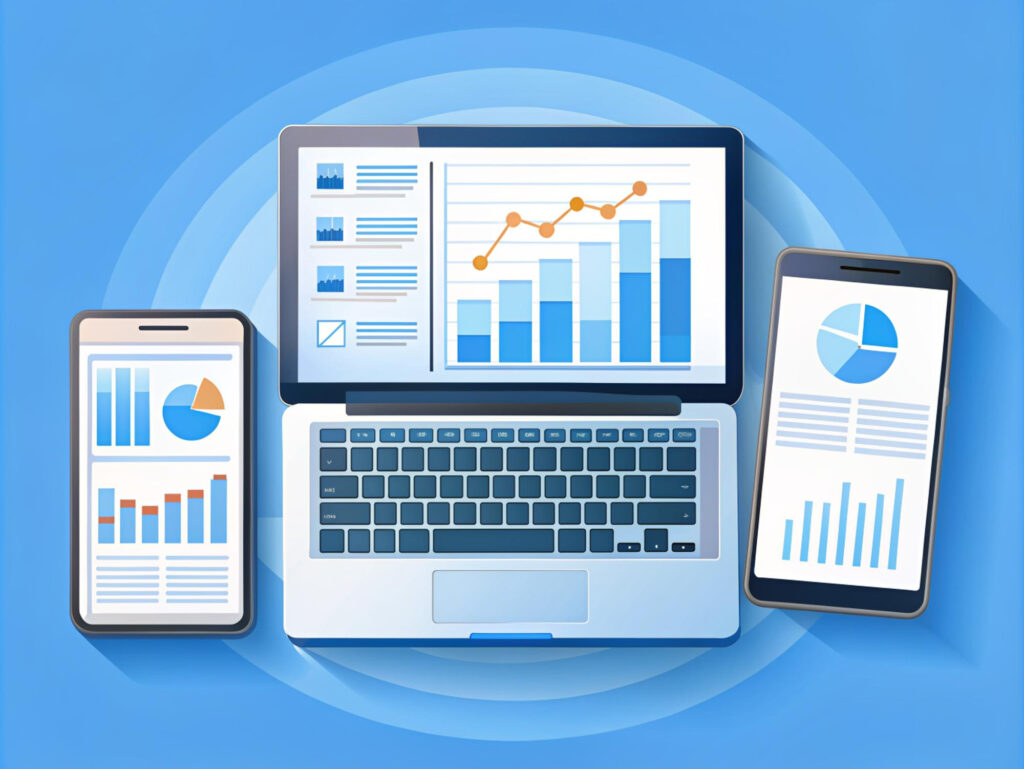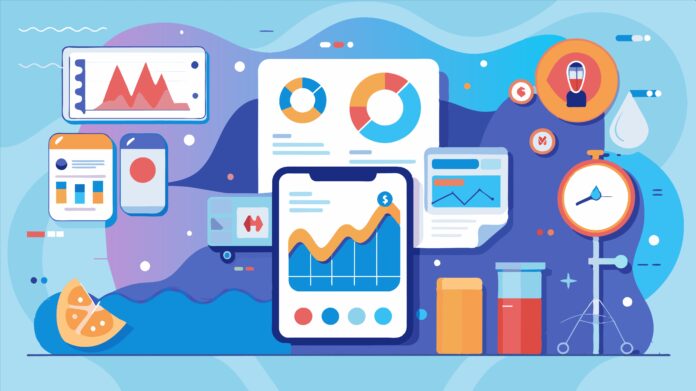Your applications are the digital frontlines of your business. A single glitch can erode customer trust and revenue. This is where Application Performance Monitoring (APM) tools can be your secret weapon. They transform performance data into actionable insights, helping you identify bottlenecks, predict issues, and deliver exceptional user experiences. Let’s dive into the APM tools landscape and find the perfect fit for your business.
What is Application Performance Monitoring (APM)?
Application Performance Monitoring (APM) is a process of using software tools and telemetry data to track the performance of crucial business applications. Businesses aim to maintain expected service levels and ensure a positive user experience. APM tools provide real-time data and insights into application performance, enabling IT teams, DevOps, and site reliability engineers to quickly identify and resolve issues.
What Metrics does Application Performance Monitoring Track?
Application Performance Monitoring (APM) tools track a variety of metrics to provide a comprehensive view of application health and performance. Here are the key metrics typically monitored:
- Response time: How long it takes for the application to respond to requests.
- Throughput: The number of transactions processed per unit of time.
- Error rate: Percentage of requests resulting in errors or exceptions.
- CPU usage: Utilization of processor resources.
- Memory usage: Amount of RAM being consumed.
- Disk I/O: Rate of read/write operations on storage devices.
- Network performance: Latency, bandwidth utilization, and packet loss.
- Database performance: Query execution times and connection pool status.
- User satisfaction/Apdex score: Measure of user satisfaction based on response times.
- Request rates: Number of incoming requests per second.
- Garbage collection: Frequency and duration of memory cleanup operations.
- Thread counts: Number of active threads and thread pool status.
- Transaction traces: Detailed breakdowns of individual transaction performance.
- Application dependencies: Performance of external services and APIs.
- Custom business metrics: Specific indicators relevant to the application’s domain.
These metrics help teams identify performance bottlenecks, capacity issues, and areas for optimization.
Importance of Application Performance Monitoring (APM) for Businesses
Application Performance Monitoring is critical for businesses because it:
- Enhances user experience and customer satisfaction
- Protects revenue by preventing downtime and slow performance
- Enables early problem detection and proactive issue resolution
- Optimizes IT resources and infrastructure spending
- Provides data for informed decision-making and improvements
- Offers a competitive edge through better digital service delivery
- Supports compliance efforts and can aid in security monitoring
In essence, APM helps businesses maintain efficient, reliable applications that drive customer satisfaction and business growth in the digital economy.

What are Application Performance Monitoring (APM) Tools?
Application Performance Monitoring (APM) tools are software solutions designed to monitor, track, and analyze the performance of applications in real-time. They help developers, IT operations teams, and business stakeholders understand how their applications are performing and identify issues that may impact user experience or system efficiency.
Key Features of APM Tools
- Real-time monitoring: Continuous tracking of application metrics.
- End-user experience tracking: Measuring actual user interactions and performance.
- Application mapping: Visualizing app architecture and dependencies.
- Transaction tracing: Following and analyzing individual transactions.
- Root cause analysis: Identifying the source of performance issues.
- Alerting system: Notifying teams of performance anomalies.
- Performance metrics: Tracking KPIs like response time, error rates, and throughput.
- Resource utilization monitoring: Tracking CPU, memory, and network usage.
- Log management: Centralizing and analyzing application logs.
- Custom dashboards: Creating visual representations of key metrics.
- Predictive analytics: Using AI/ML to forecast potential issues.
- Integration capabilities: Connecting with other IT management tools.
These features collectively enable organizations to maintain high application performance and quickly address any issues that arise.
10 Best Application Performance Monitoring (APM) Tools in the Market
With a myriad of APM tools available in the market, selecting the right one can be a daunting task. This guide presents a curated list of the ten best APM tools, each renowned for its unique features, user-friendly interfaces, and positive reviews.
-
Datadog:
- Datadog provides comprehensive monitoring and analytics for applications, infrastructure, and logs in real time. It is particularly known for its seamless integration with cloud services and powerful visualization capabilities.
- Pricing: Starts at $15 per host per month.
- Features: Real-time performance monitoring, APM, log management, and incident management.
- Pros: Excellent integration options, robust visualization tools, and strong community support.
- Cons: Can become expensive as you scale, and some users find the interface complex.
-
New Relic APM:
- New Relic APM is a leading tool that offers deep performance insights across applications, helping teams identify and resolve issues quickly.
- Pricing: Free tier available; paid plans start at $99 per month.
- Features: Application performance monitoring, real user monitoring, and synthetic monitoring.
- Pros: User-friendly interface, powerful analytics, and extensive documentation.
- Cons: Pricing can be high for larger teams, and some features may be overwhelming for new users.
-
AppDynamics:
- AppDynamics provides real-time monitoring and analytics, focusing on user experience and business performance.
- Pricing: Custom pricing based on needs.
- Features: Application performance monitoring, business transaction monitoring, and end-user monitoring.
- Pros: Strong business insights, excellent support, and customizable dashboards.
- Cons: High cost for small businesses and a steep learning curve.
-
Dynatrace:
- Dynatrace offers AI-powered monitoring solutions for applications, infrastructure, and user experience, providing deep insights into performance.
- Pricing: Starts at $69 per month per host.
- Features: Full-stack monitoring, AI-driven insights, and automatic root cause analysis.
- Pros: Comprehensive monitoring capabilities and powerful AI features.
- Cons: Complex setup process and can be pricey for extensive monitoring.
-
ManageEngine Applications Manager:
- ManageEngine offers a robust APM solution that monitors the performance of applications across various platforms.
- Pricing: Starts at $35 per month for 5 servers.
- Features: Application performance monitoring, server monitoring, and database monitoring.
- Pros: Affordable pricing and easy to set up.
- Cons: Limited advanced features compared to competitors.
-
Site24x7:
- Site24x7 is a cloud-based monitoring tool that provides insights into application performance and user experience.
- Pricing: Starts at $10 per month.
- Features: APM, server monitoring, and network monitoring.
- Pros: Affordable and user-friendly interface.
- Cons: Limited features in the lower pricing tiers.
-
Stackify Retrace:
- Stackify Retrace focuses on monitoring application performance while providing error tracking and log management.
- Pricing: Starts at $15 per month.
- Features: APM, error tracking, and log management.
- Pros: Easy to use and integrates well with various development tools.
- Cons: Limited advanced features compared to larger competitors.
-
SigNoz:
- SigNoz is an open-source APM tool that provides real-time monitoring and insights into application performance.
- Pricing: Free for self-hosted; paid plans available for hosted solutions.
- Features: Distributed tracing, metrics monitoring, and log management.
- Pros: Cost-effective for small teams and customizable.
- Cons: Requires technical expertise to set up and maintain.
-
Sentry:
- Sentry is primarily known for error tracking but also offers performance monitoring capabilities for applications.
- Pricing: Free tier available; paid plans start at $29 per month.
- Features: Error tracking, performance monitoring, and release tracking.
- Pros: Excellent for debugging and easy to integrate.
- Cons: Limited APM features compared to dedicated tools.
-
Sematext APM:
- Sematext APM provides monitoring solutions for applications, logs, and infrastructure, focusing on real-time performance insights.
- Pricing: Starts at $0.05 per monitored host per hour.
- Features: APM, log management, and infrastructure monitoring.
- Pros: Flexible pricing and comprehensive monitoring capabilities.
- Cons: The interface can be less intuitive than competitors.
Disclaimer: The information provided is for informational purposes only and should not be considered financial advice. Always conduct your own research and compare features, pricing, and customer reviews before making a decision for your business.

How do you Choose the Right APM Tool for your Organization?
Selecting the appropriate APM tool is crucial for ensuring optimal application performance and business success. Here are key factors to consider:
Define Your Specific Needs
- Identify critical applications: Determine which applications are most vital to your business operations.
- Define performance metrics: Establish key performance indicators (KPIs) to measure application health.
- Assess support requirements: Consider the level of technical expertise within your team.
Evaluate Your IT Environment
- Technology stack: Ensure the tool supports your programming languages, frameworks, and databases.
- Infrastructure: Assess whether the tool aligns with your cloud, on-premises, or hybrid environment.
- Integration capabilities: Consider how the tool integrates with existing monitoring and analytics tools.
Consider Essential Features
- Performance monitoring: The tool should provide comprehensive visibility into application performance.
- Error tracking: It should effectively identify and diagnose application errors.
- Real-time monitoring: Real-time data is essential for proactive issue resolution.
- Root cause analysis: The tool should help pinpoint the root cause of performance problems.
- Alerting and notifications: Customizable alerts are crucial for timely responses.
- User experience monitoring: Understanding user behavior is vital for optimization.
- Scalability: The tool should accommodate your organization’s growth.
Evaluate Vendor Capabilities
- Customer support: Assess the vendor’s support options and responsiveness.
- Pricing model: Evaluate pricing plans and consider long-term costs.
- Vendor reputation: Research the vendor’s market standing and customer satisfaction.
Conduct Proof of Concept (POC)
- Test the tool: Evaluate the tool’s performance in your environment.
- Gather feedback: Collect input from your team on usability and effectiveness.
Additional Considerations
- Budget: Determine your budget for the APM tool and associated costs.
- Security: Ensure the tool complies with your organization’s security standards.
- Ease of use: A user-friendly interface enhances adoption and efficiency.
- Future scalability: Consider the tool’s ability to adapt to your organization’s growth.
By carefully considering these factors, you can select an APM tool that aligns with your organization’s specific needs and drives business success.
Stop wasting time on generic software searches!
Tired of sifting through software lists that don’t meet your specific network needs? Look no further—StaQ.ai and StaQ Insider offer a smarter solution!
- StaQ.ai is an advanced AI-powered platform that goes beyond basic network monitoring. It analyzes extensive data to provide proactive insights, predict potential issues, and identify root causes before they disrupt your business.
- StaQ Insider enhances this by offering personalized guidance from network management experts. They analyze your network in conjunction with StaQ.ai’s insights to help you tailor a solution that perfectly fits your unique environment.
Ready to see a smarter approach to software selection? Visit StaQ.ai today!




